In early 2024, Bulova released a version of its vintage-inspired space-mission-worthy chronograph, the Lunar Pilot, with a dial that is indisputably unique and whose origins are literally out of this world. Here’s a closer look at the Bulova Lunar Pilot Chronograph Meteorite Dial Limited Edition.
To start with some background on the model: Bulova Watch Company, founded in New York in 1875, played a noteworthy role during the height of the U.S.A.’s Space Race with the Soviet Union in the 1950s and ‘60s. The company, at the time headed by American war hero General Omar Bradley, established a partnership with NASA through which it provided precision instruments and timekeeping devices equipped with Bulova’s signature Accutron tuning-fork technology. These instruments were used by NASA astronauts on no less than 46 space missions, and a Bulova Accutron clock remains in the moon's Sea of Tranquility to this day, placed there by astronaut Buzz Aldrin in 1969 during the historic Apollo 11 moon landing.
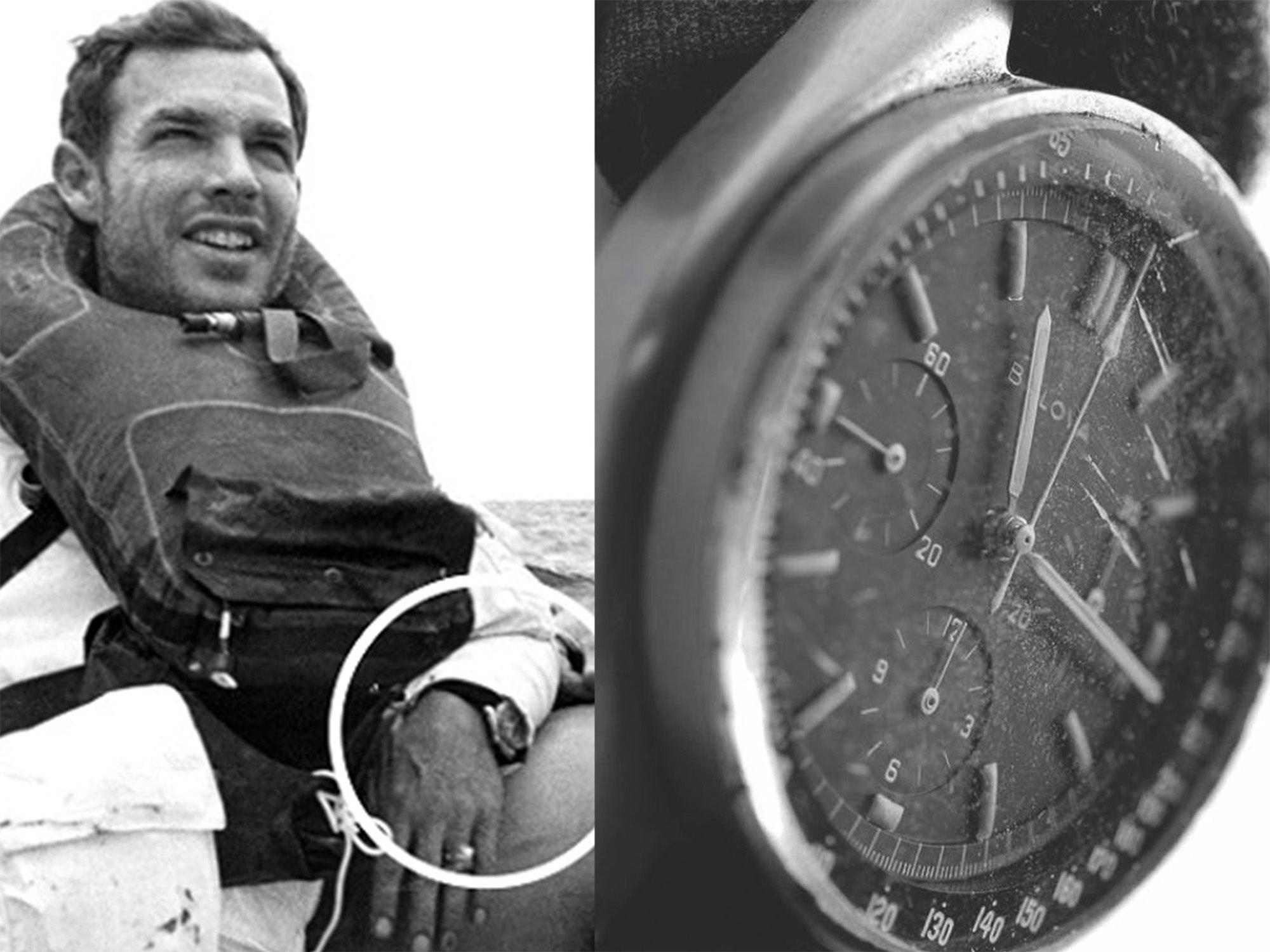
Two years later, Bulova made a customized, one-of-a-kind chronograph wristwatch for Colonel Dave Scott (above), commander of 1971’s Apollo 15 mission, the fourth to land on the moon. The watch, essentially the prototype for today's Lunar Pilot models, was specially engineered for lunar conditions, with a case built to withstand drastic changes in pressure, temperature, atmospheric conditions, and gravity. Scott, the seventh man to walk on the moon and the first to drive the Lunar Rover, was issued an Omega Speedmaster “Moonwatch” by NASA as his official mission watch, as has been the protocol ever since Apollo 11. However, he also brought along the Bulova as his backup timekeeper, and actually ended up wearing it on the moon after the crystal on his NASA-issued Speedmaster, according to records, had popped off. Scott’s Bulova watch thus became the first privately owned watch ever to visit the moon — all mission-worn Omegas, of course, being the property of NASA.
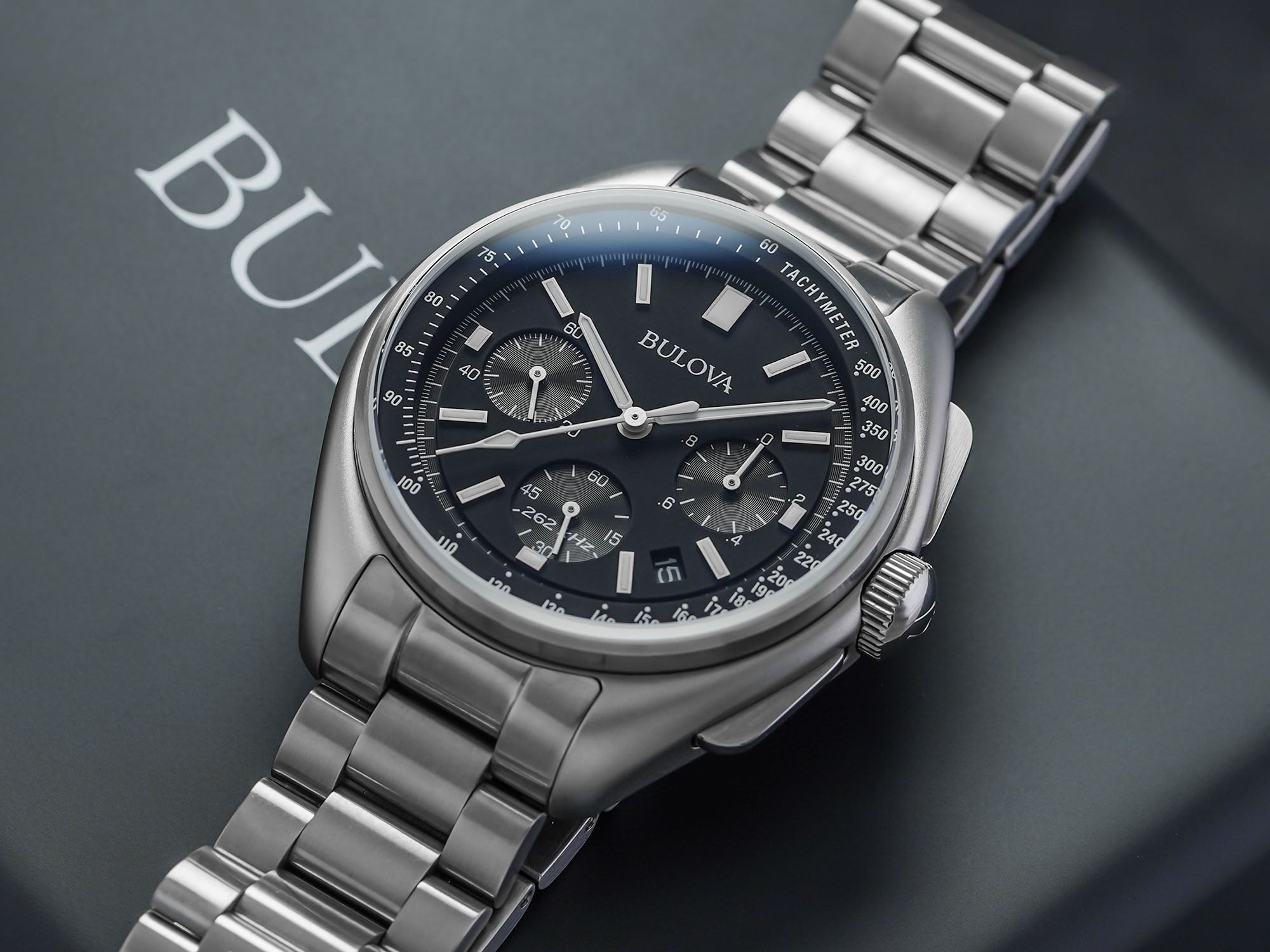
In 2016, Bulova released a modern reissue of Scott’s timepiece — which had sold for $1.62 million at auction earlier that year — originally naming it the Bulova Special Edition Moon Watch Chronograph, then changing the name to “Lunar Pilot” after a legal challenge from Omega. It was in most regards a faithful re-creation of the spacefaring original, whose chronograph function was geared toward the tracking of vital data like the duration of oxygen supplies and other life-sustaining onboard systems. Its case was larger than that of Scott’s watch, 45mm compared to 43.5mm, and its movement, rather than the mechanical one inside its predecessor, was decidedly 21st Century: Bulova’s proprietary Caliber NP20, an “ultra-high-frequency” (UHF) quartz movement that beats at 262 Hz for an extremely high degree of timekeeping accuracy, losing just seconds per year. The limited edition was a huge hit, selling out and spurring Bulova to establish the Lunar Pilot as a standalone line within the modern collection. In 2023, Bulova released a more period-appropriate version of the watch, matching its 43.5mm case diameter and dispensing with the 4:30 date window that was added to the 2016 edition.
 Barely a year later came the exclusive edition reviewed here, the latest addition to Bulova’s vintage-influenced Archive Series, and a watch that brings a bit of outer space to the wrist despite having never been on a moon mission itself. Its dial is forged from a piece of Muonionalusta Meteorite, the oldest known space rock known to science, estimated to be 4.56353 billion years old. After falling to Earth in a meteor shower, the meteorite experienced intense heating through gravitational compression, followed by millions of years of slow cooling, resulting in the lattice-like crystalline patterns on their surface known to science as “Widmanstatten,” named for the Viennese Count who first observed them in 1808. These natural textures cannot be replicated in a laboratory and are unique to each meteorite; in layman’s terms for potential purchasers of this watch, it means that no two dials are exactly alike. Under a loupe, the gray and silver-toned, ribbon-like textures on the two-tone dial (with cutouts for three black subdials) shimmer and sparkle under the box-type sapphire crystal, bringing to mind both the vastness of space and the somber isolation of the rocky lunar surface.
Barely a year later came the exclusive edition reviewed here, the latest addition to Bulova’s vintage-influenced Archive Series, and a watch that brings a bit of outer space to the wrist despite having never been on a moon mission itself. Its dial is forged from a piece of Muonionalusta Meteorite, the oldest known space rock known to science, estimated to be 4.56353 billion years old. After falling to Earth in a meteor shower, the meteorite experienced intense heating through gravitational compression, followed by millions of years of slow cooling, resulting in the lattice-like crystalline patterns on their surface known to science as “Widmanstatten,” named for the Viennese Count who first observed them in 1808. These natural textures cannot be replicated in a laboratory and are unique to each meteorite; in layman’s terms for potential purchasers of this watch, it means that no two dials are exactly alike. Under a loupe, the gray and silver-toned, ribbon-like textures on the two-tone dial (with cutouts for three black subdials) shimmer and sparkle under the box-type sapphire crystal, bringing to mind both the vastness of space and the somber isolation of the rocky lunar surface.
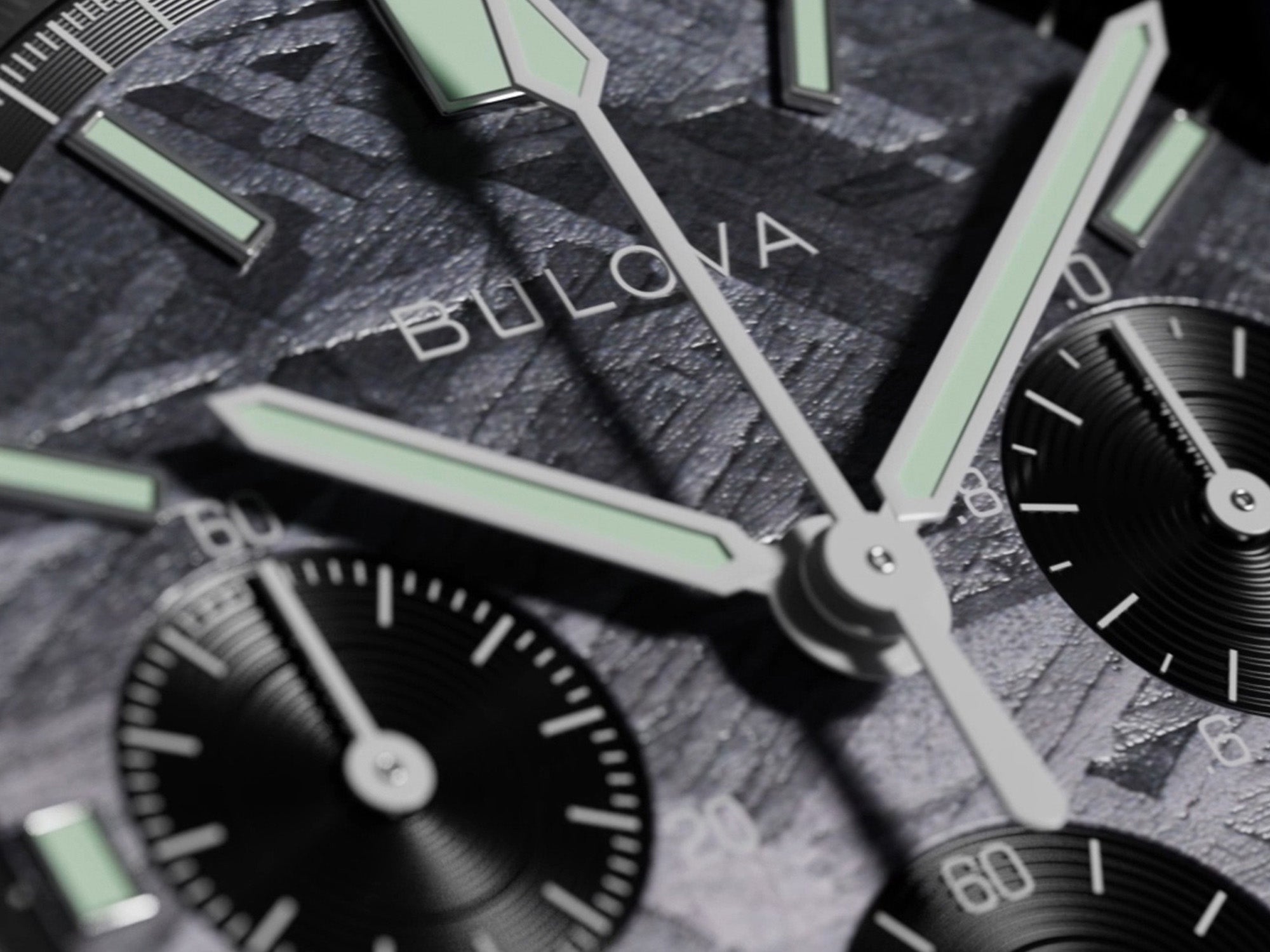
Sunken into the meteorite dial are the aforementioned trio of subdials, all with a snailed finish and white-printed scales. The running seconds tick away on the 6 o’clock subdial, and the function of other two registers becomes apparent only after you activate the stopwatch via the ergonomically curved rectangular push-buttons on the right side of the case. Engaging the top pusher sends the diamond-tipped, central seconds hand whipping around the dial once per minute, while the small hand on the 3 o’clock subdial, divided into 1/10-second measurements, makes its own rotation once per second. As the elapsed minutes pile up, the other small hand on the 9 o’clock subdial starts its own tally, up to 60 minutes. Sharp-eyed watch aficionados will notice the smooth sweep of the central chronograph hand — a rarity in a quartz movement, made possible here by the UHF caliber’s lightning-quick oscillations. A second press of the top pusher stops all the chrono hands, while a subsequent press of the bottom pusher sends them all back to zero; in the case of the central hand, this operation is different than usual: instead of snapping back counterclockwise, it completes its clockwise motion around the dial from wherever it stopped, coming to rest at 12 o’clock.

The applied baton indexes and hands are all coated with Super-LumiNova, as is the little diamond near the tip of the central seconds hand, meaning you can see the chronograph running in the dark (a boon for a spacewalking astronaut, surely). Bordering the main meteorite dial is a snailed gray scale for minutes and seconds, itself bordered by a tachymeter scale flange that is finished in an attractive pebbled texture. The latter feature, glimpsed above, is easy to miss as your eye is drawn by the cosmic latticework of the meteorite dial, but it adds another layer of luxurious detail to the watch.
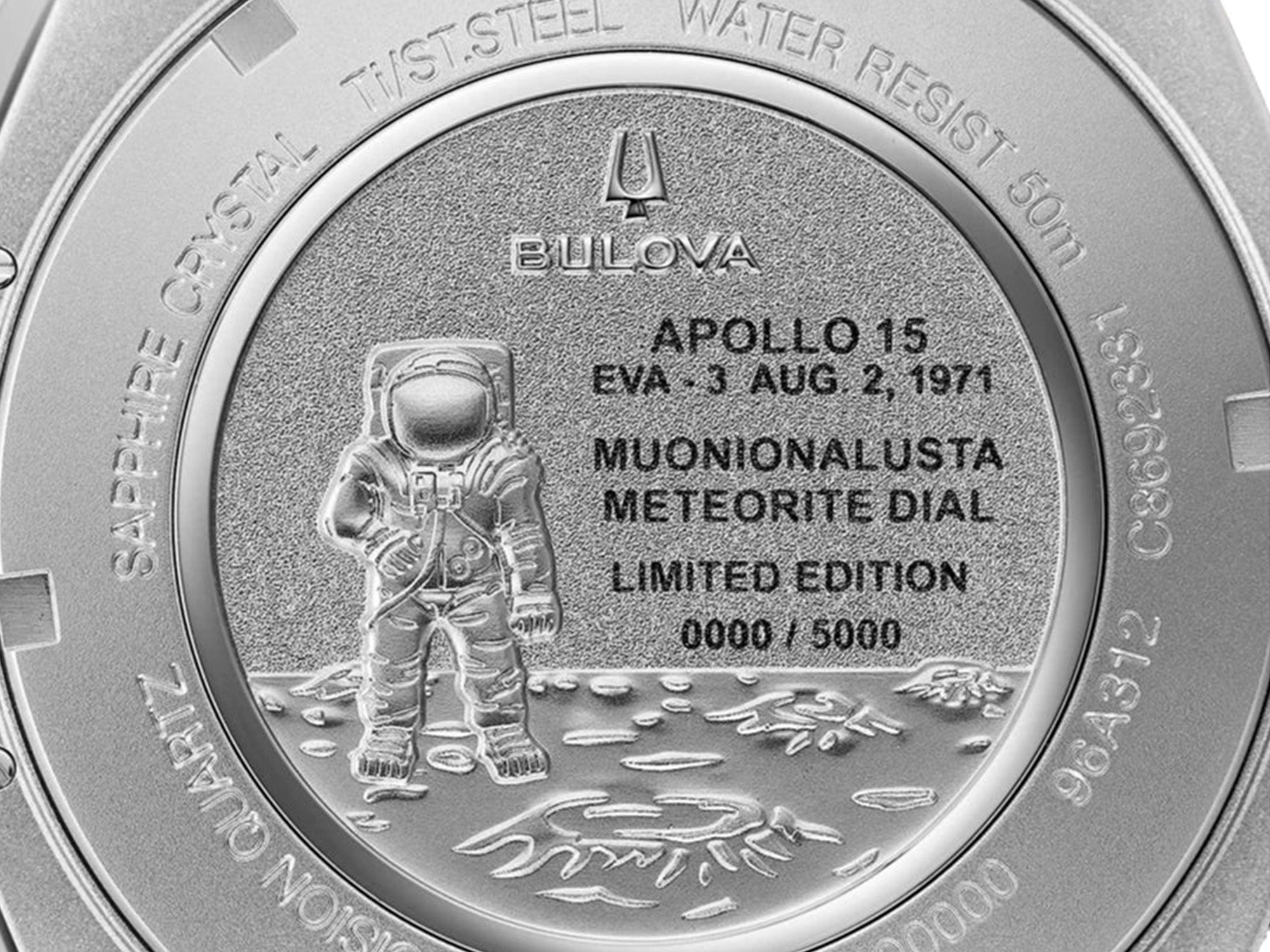
The barrel-shaped case matches the measurement of the 1971 original, at 43.5mm, and a lug-to-lug span of 51mm. Its middle part is made of titanium, with a sandblasted finish that imparts a matte, glare-free, gunmetal look. By contrast, the elements made of stainless steel — like the outer ring of the thin bezel, the rectangular chronograph pushers, and the domed, fluted crown — sport a mirror-polished finish. The ultra-high-frequency quartz Caliber NP20 inside is shielded behind a special, relief-engraved caseback, also in stainless steel, with the image of an astronaut on the lunar surface, alongside inscriptions such as the date of the Apollo 15 mission, the name of the meteorite from which the dial is derived, and the limited-edition number, out of 5,000 total pieces made.

The Bulova Lunar Pilot Chronograph with meteorite dial is delivered on a black, genuine leather NATO strap with tone-on-tone stitching, similar to the one Colonel Scott wore his watch on, this one equipped with latched spring bars in case you want to swap it out with another strap, or just want to get an eyeful of the caseback’s engraved details. The watch attaches to the wrist with a blackened steel pin buckle. The strap is supple and soft on the skin, and the watch’s convex caseback and subtly sloping lugs nestle comfortably into the small of the wrist. At slightly over 13mm thick, the watch sits fairly high and might strain a bit against a tightly buttoned shirt cuff, but thanks to its thoughtful, monochromatic treatment, it announces its presence discreetly despite its intriguing origins and exclusivity.
Price: $1,495, Case Size: 43.5mm, Case Height: 13.2mm, Lug to Lug: 51mm, Lug Width: 20mm, Crystal: Sapphire, Water Resistance: 50 meters, Movement: High-Frequency Quartz NP20


















































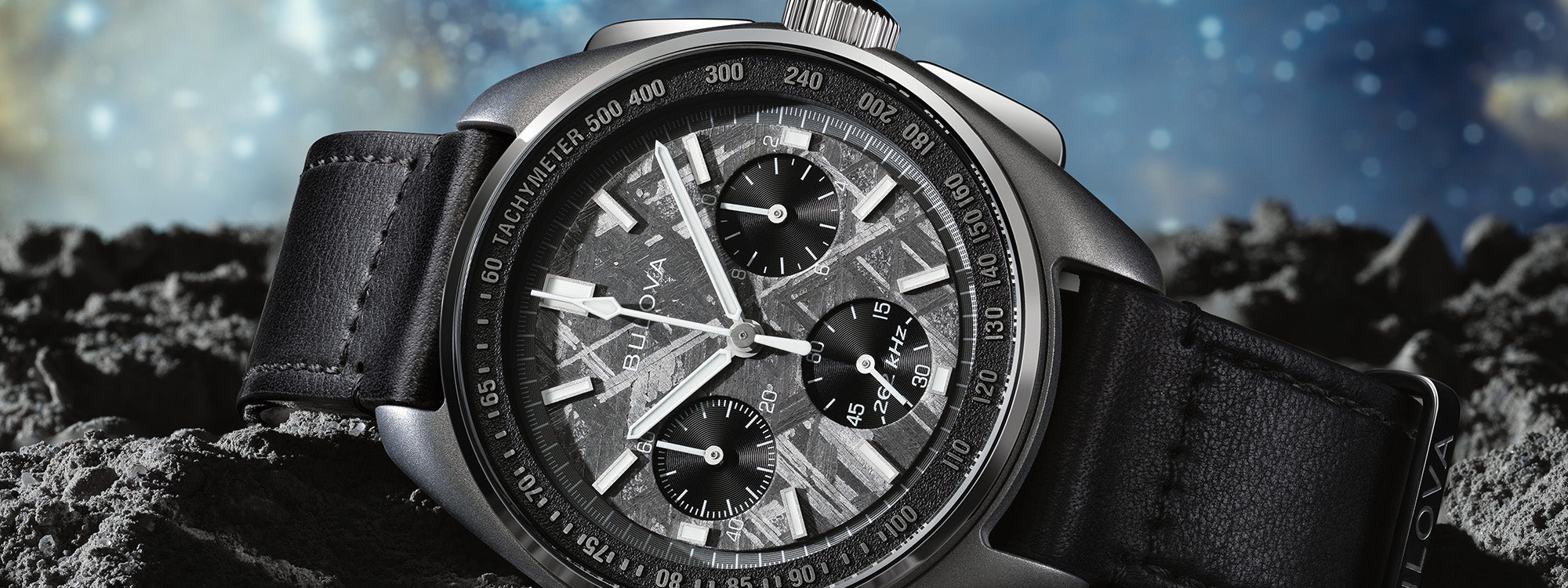



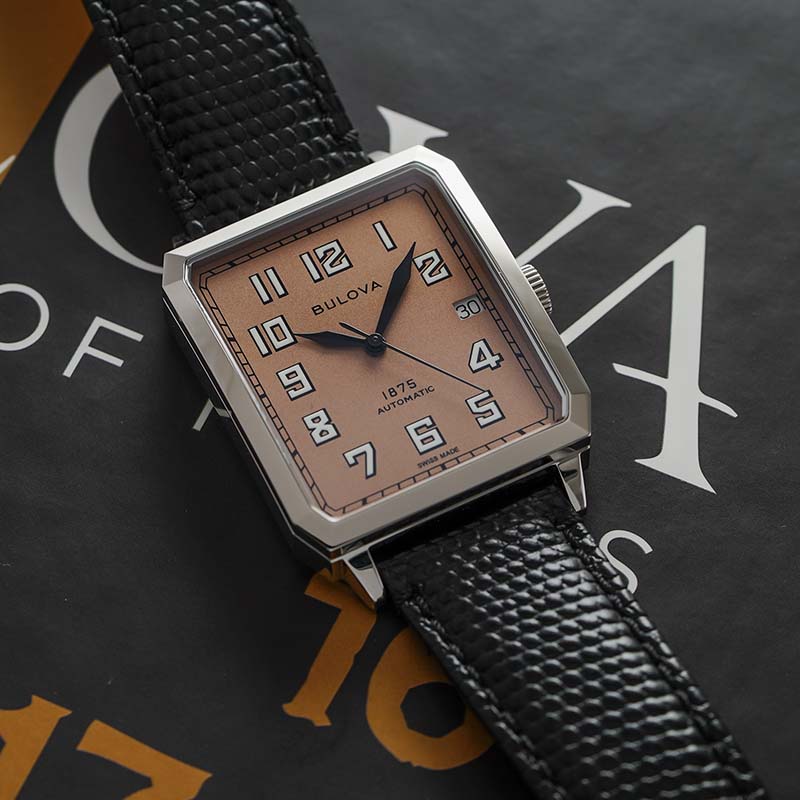
2 Comments
I’m pleased to see this getting attention. However, one small correction when referring to the frequency: 262 kHz, not “262 Hz.”
I sure would like to know more about the time piece Aldrin left. This is the first I have heard of this.
I know the on board mission timer, installed in the LM, failed and Armstrong left his Omega behind as a back up in case something happened to Aldrin’s watch.
If this story is accurate, there is a fourth timepiece is associated with the first moon walk.